Air defense system of the DPRK: radar airspace control and fighter aircraft
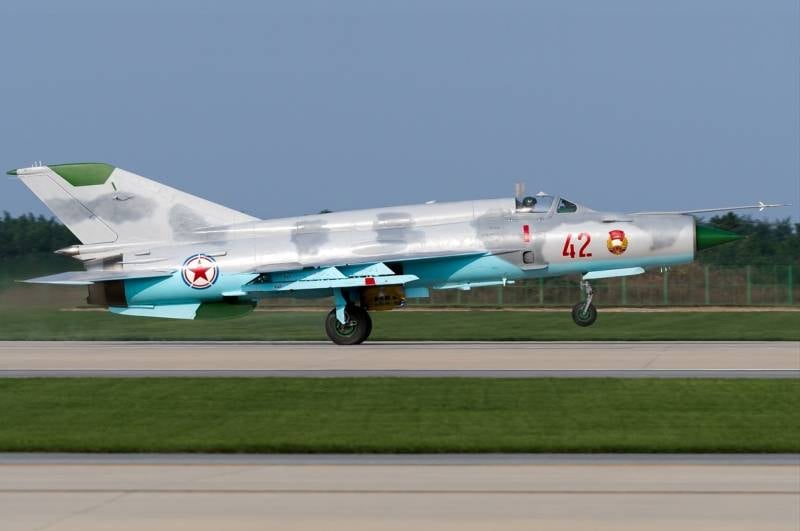
The control of the airspace of the DPRK and the protection against air attacks of important administrative, industrial and defense centers, large military bases, ports, bridges, tunnels, as well as other strategically important objects are entrusted to the North Korean air force, which, in addition to aviation, organizationally include radio engineering and anti-aircraft missile troops.
At present, the air defense of the DPRK relies on a network of round-the-clock radar posts located throughout the country, covering the air situation over the Korean Peninsula, coastal areas and border Chinese and Russian territories. Data from radars via radio relay and cable lines enter the automated control system, VHF and HF radio networks are used as backup, in which information is broadcast by voice or Morse code.
The combat operation of the air defense system is controlled from the combat command post at the headquarters of the DPRK Air Force, to which four sector commands are subordinate: the northwestern, northeastern, southern and Pyongyang air defense subsectors. Each sector consists of a headquarters, an airspace control center, subordinate radio engineering units, one or more anti-aircraft missile regiments, an air defense artillery division, and other units and subunits.
In case of violation of the air border, after the announcement of the alarm, duty fighter-interceptors rise into the air, air defense systems and anti-aircraft artillery are put on alert. Further actions of ground-based air defense systems should be coordinated with the headquarters of aviation divisions and the central command post.
Radar means of airspace control
In the 1960s-1970s, the airspace of the DPRK and the adjacent territories were controlled by P-10, P-12 and P-14F meter-range radars, as well as P-20 and P-30 centimetric radars. Paired with all-round radar stations, the PRV-9 and PRV-11 radio altimeters worked.
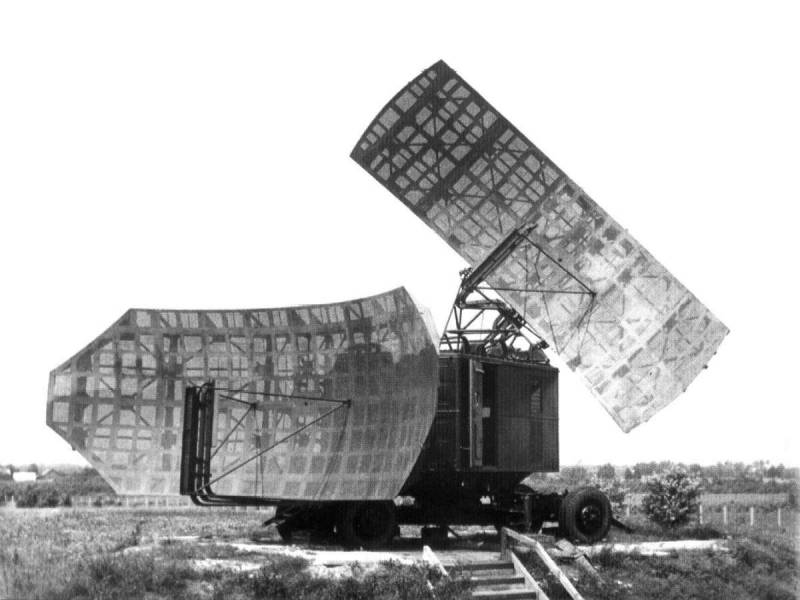
Radar P-20
In the 1980s, the renewal of the North Korean air defense system began, and simultaneously with the then modern air defense systems and fighters, North Korea received new radar equipment from the USSR, some of which are still operational.
The most "long-range" in the radio engineering troops of North Korea were the meter-range radars of the P-14 family. During the Cold War, the Soviet Union supplied 3 P-14F radars and 7 5N84A Oborona-14 stations.
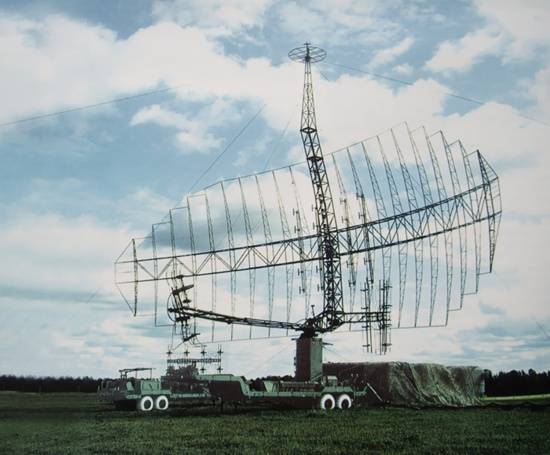
Antenna post radar 5N84A "Defence-14"
The P-14F "Van" radar, delivered in the late 1960s, was intended for long-range detection and measurement of the range and azimuth of air targets when operating as part of an automated control system or autonomously. With a flight altitude of 10 m, the MiG-000 fighter could be detected at a distance of 17 km. The detection range of large high-altitude targets reached 300 km. The upper limit of the detection zone is 540 km.
The mobility of these bulky stations was rather conditional. The main elements of the radar were placed on five transport units (two semi-trailers with equipment, two with antenna equipment and three trailers with a power supply system). The antenna was a parabolic mirror measuring 32x11 m. The antenna post was installed on a prepared site.
A very large antenna post and the placement of the hardware in towed trailers make it difficult to relocate and increase vulnerability to air attack. Due to low mobility and large dimensions, the P-14 family radars are actually peacetime stations, which, in modern warfare, are subject to rapid destruction. However, these shortcomings were largely offset by a very significant detection range and a large resource.
Radar 5N84A "Defence-14" has improved noise immunity and higher measurement accuracy. Some of the electronic blocks are made on semiconductors. The station is located on six transport units. Standby radars of the P-14 family are usually operated in conjunction with radar altimeters PRV-9, PRV-11, PRV-13 in the interests of anti-aircraft missile regiments and brigades equipped with air defense systems: SA-75M, S-75M3, S-125M1A and S- 200VE.
P-18 meter-range radars and P-19 decimeter radars, which were attached to anti-aircraft missile divisions and used to control aircraft flight, have much higher mobility. In the 1980s, North Korea received two dozen P-18 and six P-19 radars.
The two-coordinate radar of the P-18 meter range was created in 1971 on the basis of the P-12MP radar by transferring its electronic part to a new element base. At the same time, the radar was paired with the new Kremniy-2M nationality identification radar system.
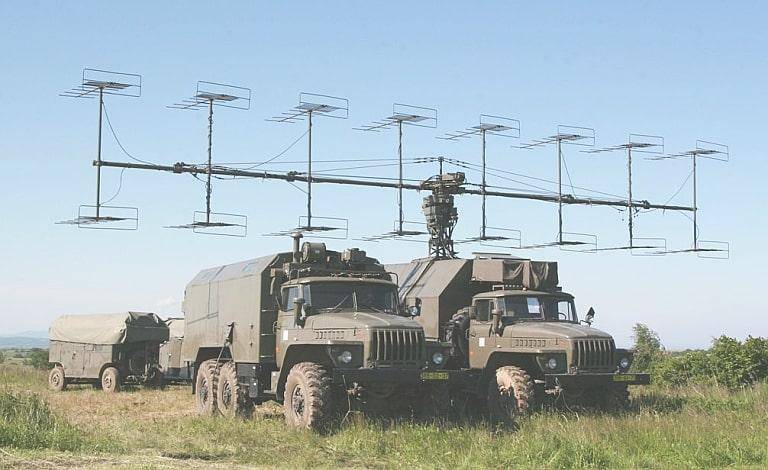
Radar P-18
All station equipment is located on the basis of two Ural-375 vehicles. In KUNG of one there is radio-electronic equipment with operator workplaces, in the second - an antenna-mast device. In the absence of interference, the P-18 radar is capable of detecting a large high-altitude aerial target at a distance of up to 260 km.
The P-19 radar, adopted by the Soviet Army in 1974, is designed to detect air targets at low altitudes. It has a detection range of 160 km. Ceiling - 6 m.
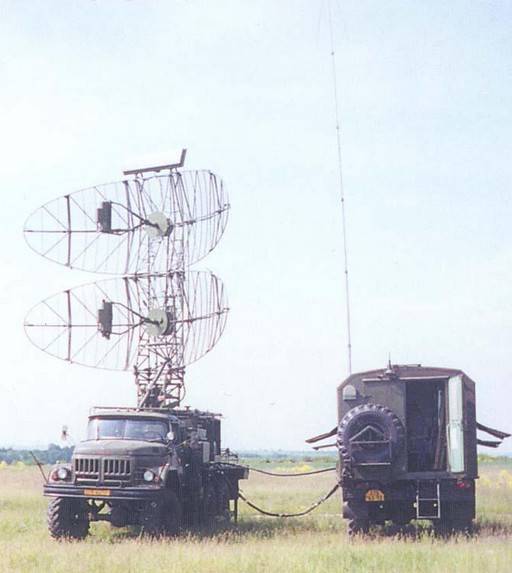
Radar P-19
The van on the ZIL-131 chassis contains radar equipment, equipment for interfacing with other radars, a radar interrogator, data acquisition and transmission units, as well as a set of measuring and communication equipment.
In the late 1970s, two-coordinate radars P-20 began to arrive to replace the obsolete P-30 and P-37 radars. The station was a continuation of the development line of the P-20, P-30 and P-35 radars. But compared to these radars, the P-37 had better noise immunity, measurement accuracy and reliability.
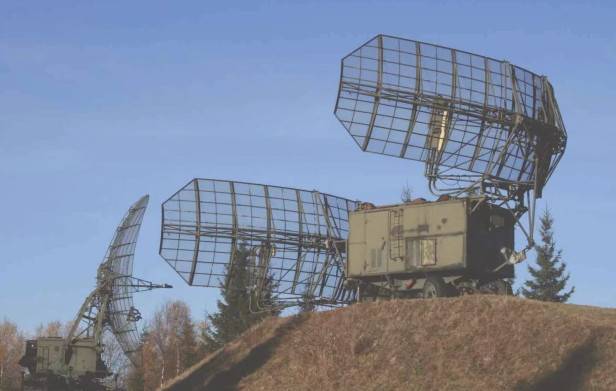
P-37 radar and PRV-13 radio altimeter
The P-37 radar operates in the decimeter frequency range and is capable of seeing large high-altitude targets at a distance of up to 250 km. To measure spatial coordinates, the station can be interfaced with altimeters PRV-11 and PRV-13. Although the mobility of the P-37 leaves much to be desired, its deployment time (8 hours) is still several times less than that of the 5N84A meter-range radar.
In the late 1980s, the DPRK air defense forces received three 64Zh6 radar systems (“Cabina-66M”). Radar "Kabina-66M" in the export version included two radar rangefinders, a technical post, indicator and modulation equipment, a trailer with spare equipment and measuring equipment, four radio altimeters, two interrogators of nationality, radio broadcasting equipment, diesel generator electrical installations, truck crane. The complex gave consumers three coordinates of the target: azimuth, range, height.
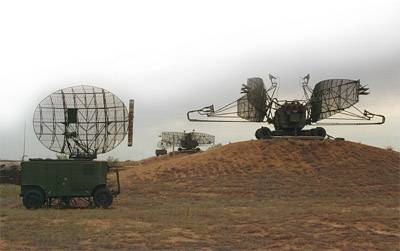
The radar complex ensured the detection of the MiG-21 fighter flying at an altitude of 15 km at a distance of 380 km. The upper limit of the detection zone is 54 km. The deployment of 64Zh6 radar systems made it possible to significantly expand the possibilities of using the S-75M3 and S-200VE air defense systems for high-altitude targets and increase the stability of combat operations control of the anti-aircraft missile regiment in the face of various kinds of interference by the enemy.
In 1987–1988 Three ST-68U (19Zh6) radars arrived in the DPRK. This three-coordinate station, operating in the decimeter frequency range, was one of the best late Soviet radars.
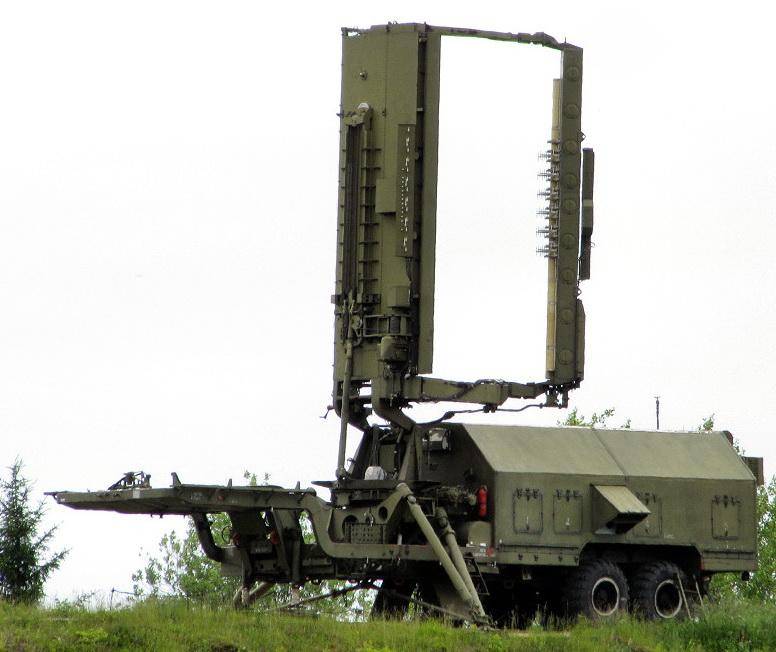
Transportation and deployment were facilitated by the fact that the antenna post with a rotary device and the ST-68U radar control cabin were mounted on a single semi-trailer. The radar station has good mobility and high noise immunity. It does not require a radio altimeter to accurately determine coordinates. The ST-68U radar is capable of operating effectively on low-altitude targets, including such complex ones as cruise missiles, in active and passive interference in the presence of intense reflections from the ground and in adverse weather conditions, and simultaneously track up to 30 targets. It is possible to detect a target with an RCS of 0,1 m², flying at an altitude of 100 m, at a distance of 46 km, at medium and high altitudes - at a distance of 160 km. The maximum detection range of large high-altitude targets is more than 300 km.
In addition to Soviet-made radars, Chinese radars are operated in the DPRK. English-language sources say that China supplied the JLP-1970, YLC-1990 and JY-40 radars in the 8s-14s.
The JLP-40 radar is a copy of the Soviet P-35 station. This option appeared after Chinese experts got acquainted with the P-35 radar, stolen during the delivery by rail to Vietnam through the territory of the PRC. A MiG-17 fighter flying at an altitude of 1 m could be detected at a distance of 800 km. The maximum detection range is up to 100 km.
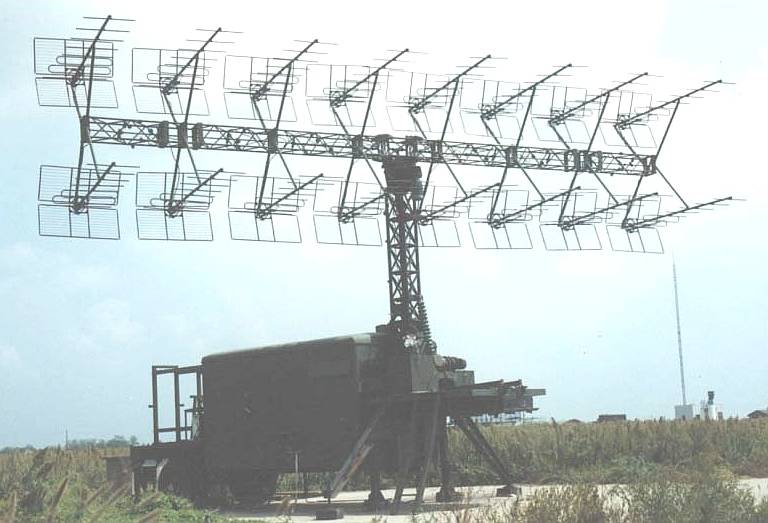
YLC-8 radar
The YLC-8 radar was created on the basis of the Soviet P-12 station. The upgraded YLC-8A / 8V radars are close in their capabilities to the Soviet P-18 radars. It is reported that the detection range of the YLC-8B radar exceeds 250 km, and it has implemented digital signal processing, and information is displayed on modern monitors.
The functional analogue of the Soviet P-37 radar is the JY-14 type station, launched into mass production in the late 1980s. Compared to the P-37, the Chinese radar has better noise immunity and is three-coordinate.
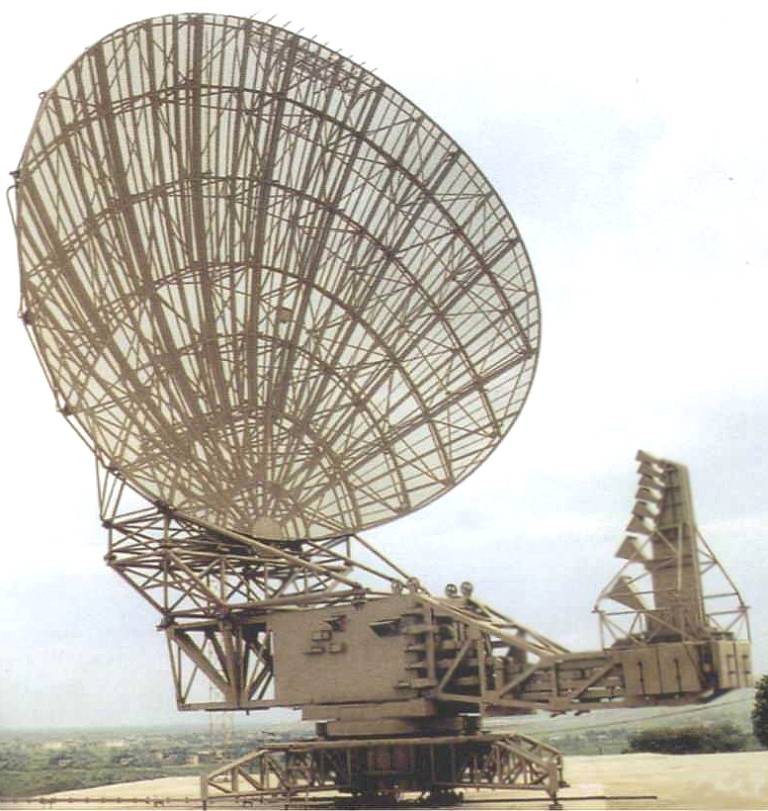
Antenna post radar JY-14
The JY-14 radar operates in the centimeter frequency range and is capable of detecting targets at a distance of up to 300 km and an altitude of up to 25 km. When placing an antenna post on a hill, the MiG-21 fighter flying at an altitude of 1 m can be taken for escort at a distance of 500 km. Stations of the JY-200 type at the beginning of the 14st century were considered one of the best in terms of cost-effectiveness and were widely exported.
Western sources claim that all the old P-12 and P-14F meter-range radars that were available in North Korea have now completely exhausted their resources and have been decommissioned.
Due to the fact that the North Korean agents managed to illegally acquire spare parts, three 5N84A, 10-12 P-18 radar stations, 5-6 P-19 and P-37 units, as well as two ST-68U remained in working order. The status of the RLC 64Zh6 is not known, it is possible that individual elements of the complex, such as radio altimeters, remained in working condition.
A few years ago, North Korea tried to buy new 36D6M radars in Ukraine or upgrade existing ST-68Us. However, the deal did not take place.
In total, three dozen deployed radar posts can be found in the DPRK on satellite images. Approximately one and a half dozen Chinese-made stations, which mainly operate in the central and northwestern parts of the country.
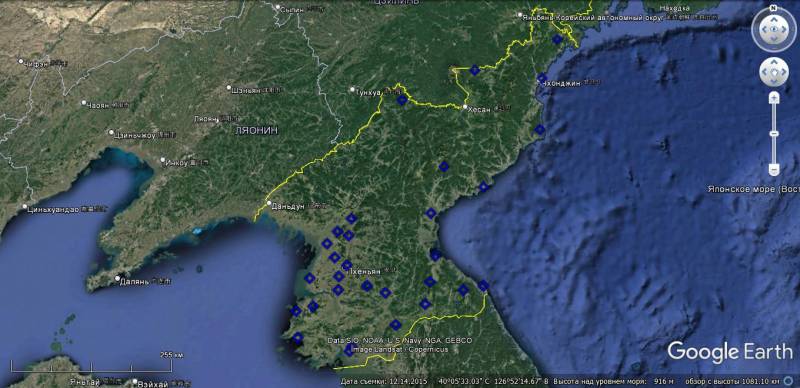
The layout of radar posts on the territory of the DPRK
Some Western experts write that China, bypassing international sanctions, could supply the DPRK with components and components for the assembly of modern AFAR radars at North Korean enterprises. But reliable evidence of this could not be found.
fighter aircraft
According to reference data, the DPRK Air Force has about 300 fighters formally capable of performing air defense tasks. However, in fact, the number of interceptors that are of real combat value and are in technically sound condition is many times less.
Thus, the World Air Forces 2022 guide, published by the British aviation magazine Flight International, states that the DPRK Air Force has more than 100 Shenyang J-5 fighters.
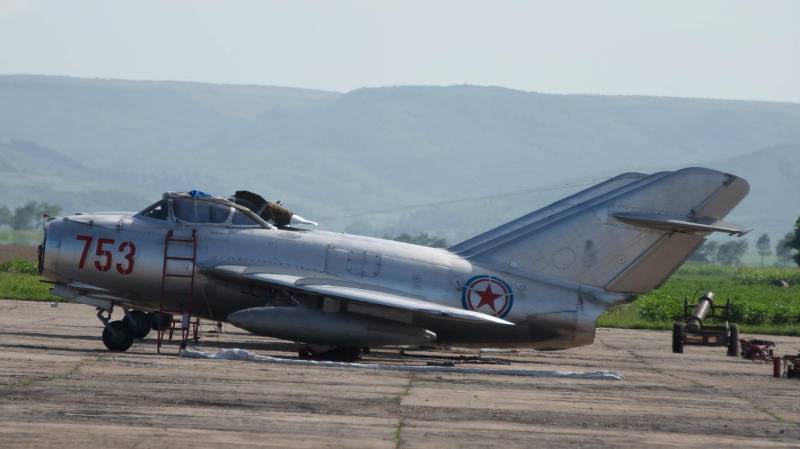
Fighter J-5
This subsonic aircraft, which first flew in 1956, is a Chinese copy of the MiG-17F. In the PLA Air Force, it was decommissioned in 1992. It is extremely doubtful that most of the fighters, whose age is approaching the sixth decade, have a satisfactory combat readiness. But even with complete technical serviceability, high qualification and motivation of the pilot, it is almost impossible to conduct an air battle with a modern fighter or to intercept a cruise missile on an aircraft equipped with a primitive instrumentation system, antediluvian communications and navigation.
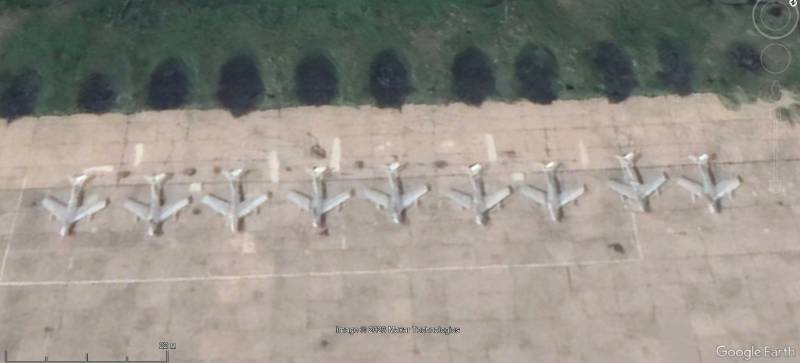
Satellite image of Google Earth: J-5 fighters at Oran airbase. Photo taken in July 2019
Most of the J-5 fighters are used for training purposes, they can also be used for bombing and assault strikes.
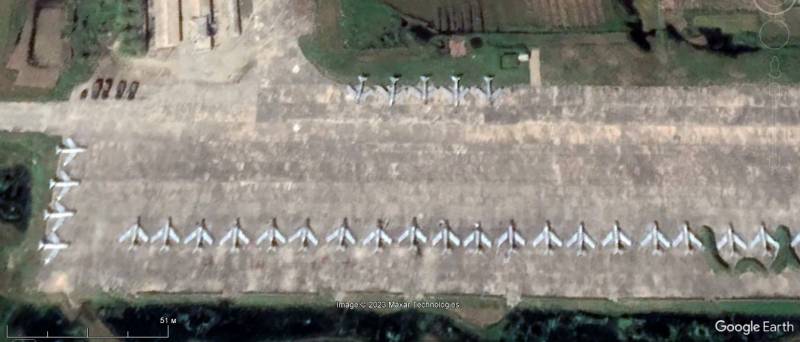
Satellite image of Google Earth: J-5 fighters at the air base. The picture was taken in September 2022
About 15 years ago it was reported that a significant number of North Korean J-5s were being converted into manned cruise missiles to be flown by suicide pilots.
The same fully applies to the Shenyang J-6 (a Chinese copy of the MiG-19S), of which there are about 90 units in North Korea.
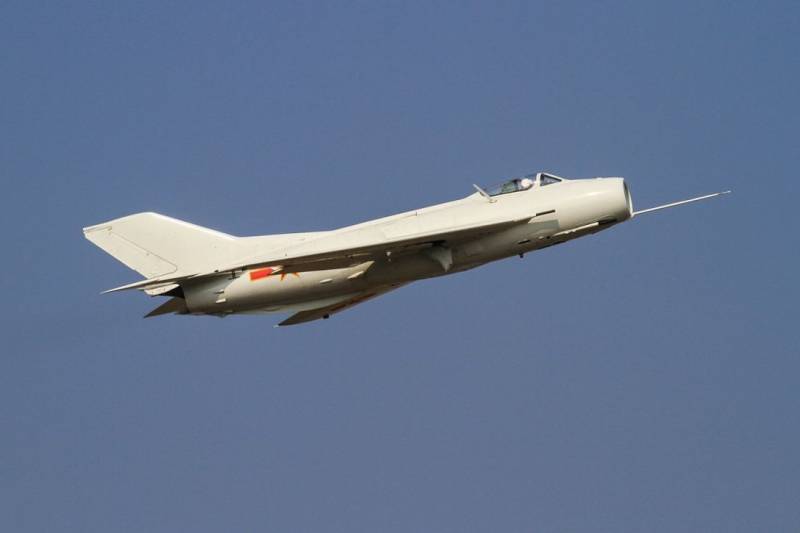
Fighter J-6
This first-generation supersonic fighter was decommissioned from the PLA Air Force in 2010, and a significant part of them in China were converted into Drones.
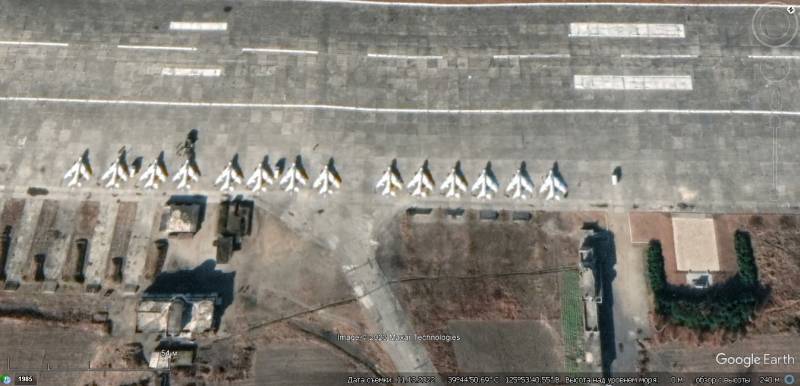
Satellite image of Google Earth: J-6 fighters at Kuson airbase. The picture was taken in November 2022
Even assuming that these very old aircraft are serviceable and indeed capable of taking to the air, their combat value as interceptors is very low.
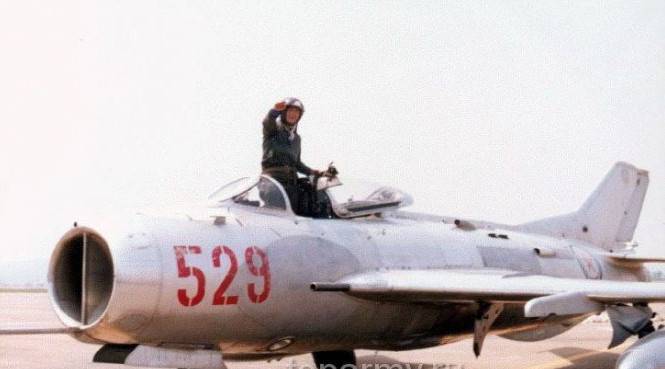
The fighter, designed in the early 1950s, lacks an airborne radar and automated guidance equipment, which makes it virtually impossible to successfully intercept at night and in difficult weather conditions. J-6 aircraft can only be relatively effective in the ground attack role.
In the past, a significant proportion of the North Korean fighter fleet was occupied by Soviet-made MiG-21s. Between 1966 and 1974, the DPRK Air Force received at least 174 MiG-21s of various modifications.
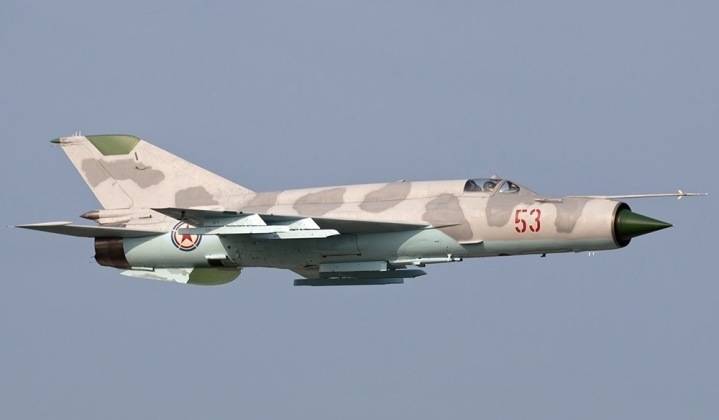
It is believed that about 20 MiG-21bis out of 30 vehicles illegally purchased in Kazakhstan in 1999 are now in flight condition. In the past, North Korean emissaries actively tried to buy spare parts and consumables for Soviet-made MiG-21 fighters around the world, which indicates the important role these aircraft played in the DPRK Air Force.
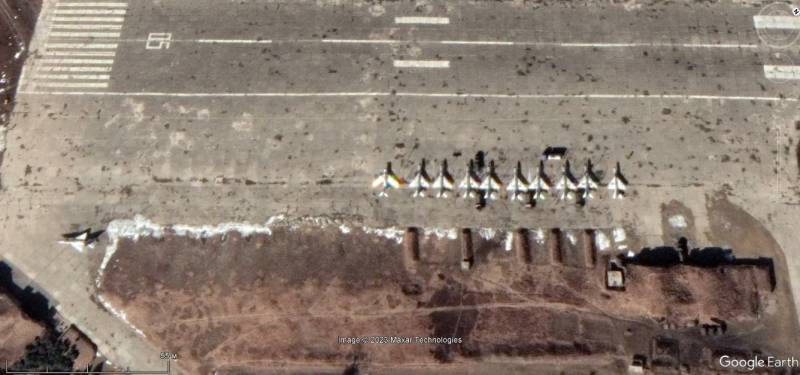
Satellite image of Google Earth: MiG-21, J-7 and J-5 fighters at the Toksan airfield. The picture was taken in March 2022
More numerous are Chinese-made Chengdu J-7II fighters, deliveries of which began in 1982. A total of 70 Chinese delta wing fighters were purchased, with approximately 40 remaining in service today.
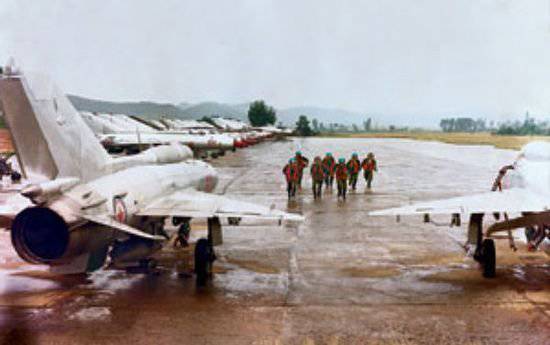
The Chinese J-21II differs from the Soviet MiG-13F-1959 of the 7 model only in a more powerful engine, it does not have radar and is much inferior to the MiG-21 fighters produced in the USSR in the 1970-1980s.
Aviation publications claim that the DPRK has a significant number of fighters with variable wing geometry: single-seat MiG-23ML and two-seat combat training MiG-23UB. By the standards of the 1980s, this aircraft had impressive acceleration characteristics, carried medium-range missiles and was equipped with advanced avionics equipment: an onboard radar with a detection range of up to 85 km, a heat direction finder capable of detecting turbojet engine exhaust at a distance of up to 35 km, all sighting information displayed on the windshield. In close combat, the MiG-23ML pilot had at his disposal upgraded UR R-60M with a noise-resistant TGS and a 23-mm cannon in a hanging container.
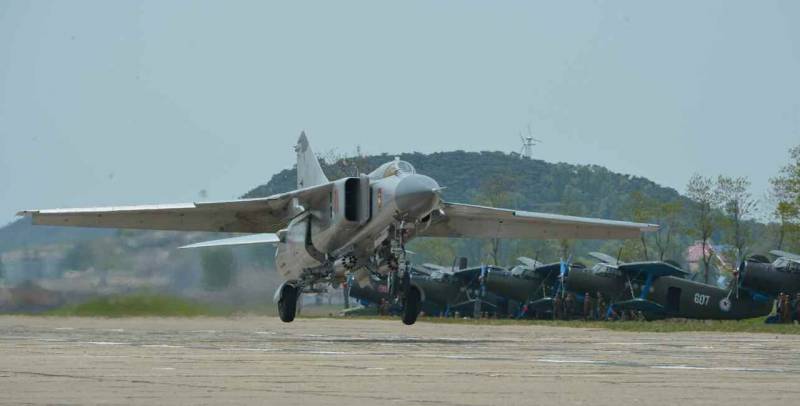
In various reference books, the number of North Korean MiG-23ML / UB ranges from 40 to 56 units. However, judging by satellite images, their number seems to be too high. It is unlikely that front-line interceptors received more than 35 years ago are in good technical condition. Based on the analysis of available satellite images, it can be argued that as of mid-2022, no more than two dozen MiG-23s took off into the air.
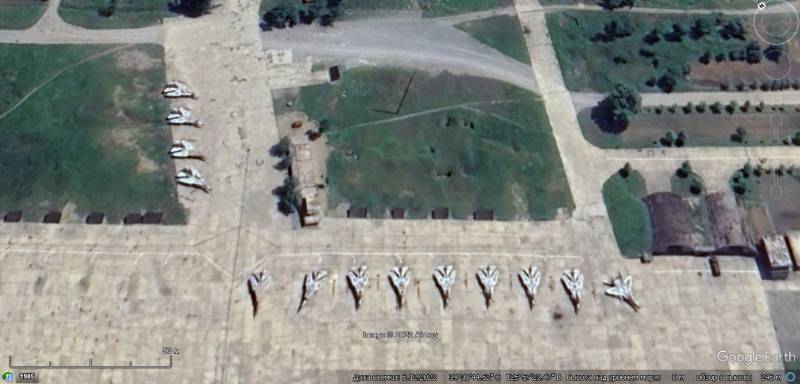
Satellite image of Google Earth: MiG-23 and MiG-29 fighters at the Pukchon airfield. The picture was taken in June 2022
Without exception, all fighters of the MiG-23 family have always been expensive to operate and require a lot of labor during maintenance. Depreciation of the materiel and the shortage of spare parts must have made most of these very complex aircraft incompetent. English-speaking experts write that keeping the North Korean MiG-23s in working condition was made possible thanks to the purchase of spare parts and consumables on the black market. In most countries where there were MiG-23s, they have long been removed from service.
The most modern DPRK Air Force fighters are the MiG-29A / UB, purchased in 1988-1992. A total of 45 4th generation fighters were delivered, approximately 30 of them were assembled in North Korea.
The MiG-29A favorably differed from the MiG-23ML, which was mainly focused on attacks with medium-range missiles, ease of piloting, maneuverability and lower labor costs in preparation for a sortie. In the 1980s-1990s, in close air combat, the XNUMXth, due to its high maneuverability and thrust-to-weight ratio, had an advantage over all Western fighters.
In addition, the MiG-29A was equipped with a fairly advanced avionics for its time and carried six R-60M and R-73 melee missiles with a launch range of 10–30 km. Built-in armament - 30-mm gun GSh-301. To combat an air enemy out of line of sight, the combat load could include two R-27R medium-range missiles with a semi-active radar seeker capable of hitting targets outside the line of sight, which in turn made it possible to perform tasks of intercepting front-line and strategic bombers on distant approaches from protected objects. The N019 radar mounted on the MiG-29A export fighter is capable of detecting a fighter-type target at a distance of up to 85 km. Optical-location system in conditions of good visibility captures targets in the infrared range at a distance of up to 35 km. Target information is displayed on the windshield.
In the early 1990s, negotiations were underway on the licensed production of the MiG-29 in the DPRK, it was planned to establish it at the aircraft plant in Pakchon. The collapse of the USSR did not allow the implementation of the plans of the North Korean leadership. The DPRK had no financial resources, and Russia refused to provide technology, equipment and assembly kits on credit.
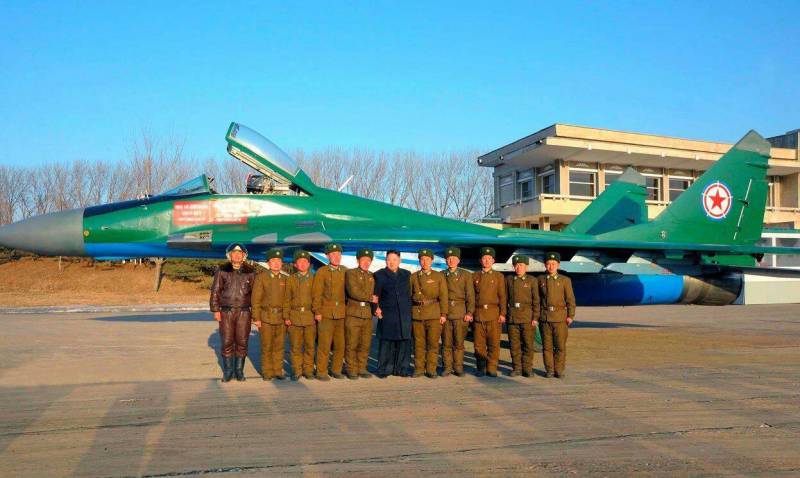
MiG-29 DPRK Air Force
Some North Korean MiG-29s were overhauled in the early 2000s. After the repair, the planes were painted green. At the moment, the number of flying MiG-29s in the DPRK is small.
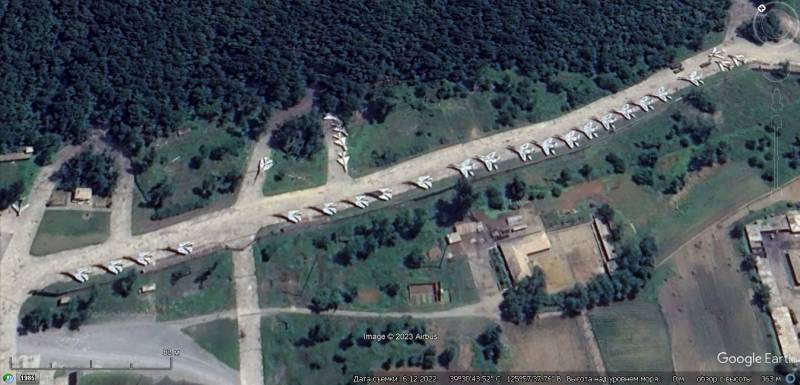
Satellite image of Google Earth: MiG-29, MiG-23, MiG-21, J-6 and J-5 fighters stored at the Pukchon airfield. The picture was taken in June 2022
Most of the aircraft put into storage. MiG-29 fighters, which have prospects for further use, are mothballed in underground shelters, which are cut into the rocks near some air bases.
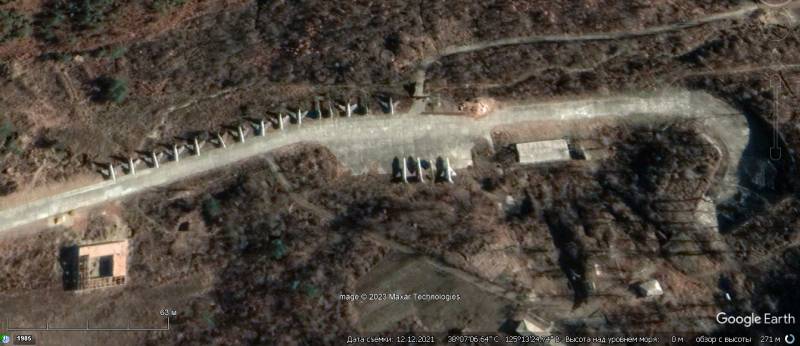
Satellite image of Google Earth: J-5 and MiG-21 fighters in the parking lot near the entrance to the underground shelter at Konsan airbase. The picture was taken in December 2021
Aircraft that have exhausted their resource are mostly stored in the open air and are a source of spare components and parts.
North Korean air-to-air missiles
All DPRK Air Force fighters are armed with built-in and outboard cannons. Artillery aviation weapons can only be used in close combat, against visually observed targets, and currently the main weapons interceptors are guided missiles.
Together with the Soviet MiG-21 fighters, air combat missiles with the R-3S (K-13) IK GOS (a Soviet copy of the American AIM-9В Sidewinder) were transmitted. There were also R-13R missiles with semi-active radar guidance.
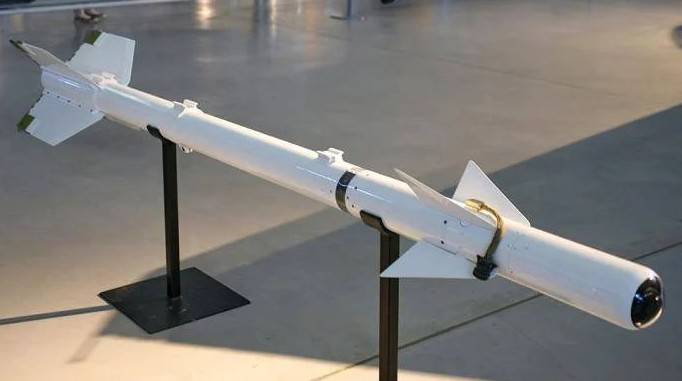
R-3S short-range air-to-air guided missile
In total, more than 1966 R-1978S/R missiles were delivered from 1 to 000. It is reported that for their use in the late 3s and early 1980s, some of the Chinese-made J-1990 and J-5 fighters were finalized. Currently, the R-6S/R missiles are considered obsolete, and all missiles of this type are beyond the warranty period.
The Chinese analogue of the UR R-3C is the PL-2A. Approximately two hundred PL-2A are available for suspension on J-7 fighters in service with the North Korean air force.
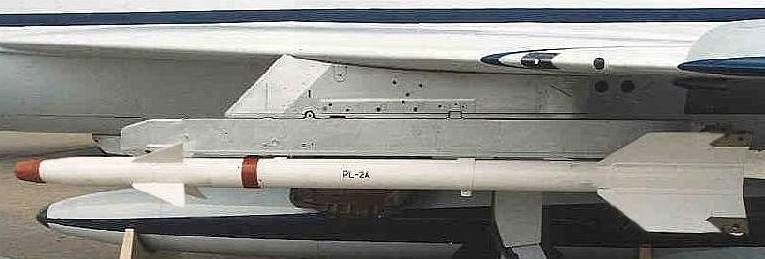
PL-2A missile
In the mid-1980s, the R-21M melee missiles appeared in the arsenal of the North Korean MiG-23 and MiG-60, which, compared to the R-3S, are a much more effective means of hitting air targets. In total, North Korea received 450 R-60M missiles.
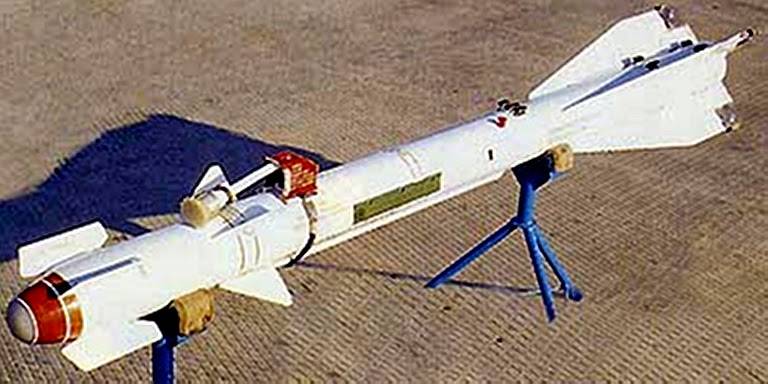
R-60M short-range air-to-air guided missile
In terms of launch range (10 km in the forward hemisphere), the R-60M surpassed the R-3S by only 2 km. But at the same time, the R-60M was almost twice as light, had better noise immunity and maneuverability.
There are discrepancies in the composition of the armament of the MiG-23ML fighters in foreign sources, they mention the R-23R / T and R-24R / T missiles. In fact, the MiG-23ML could carry all these missiles, but the R-23R and R-23T medium-range missiles were originally included in the arsenal of earlier modifications of the MiG-23M / MF, and much more advanced R-23R and R-24R missiles were created for the MiG-24ML R-XNUMXT.
The R-23R missile with a semi-active radar seeker is capable of hitting targets at a distance of up to 35 km and surpassed the R-3R missile in this indicator by 4 times. The launch range of the UR R-23T with TGS reached 23 km. It was believed that this missile could fire at targets on a collision course, and to capture the target, it was enough to heat the leading edges of the aerodynamic surfaces.
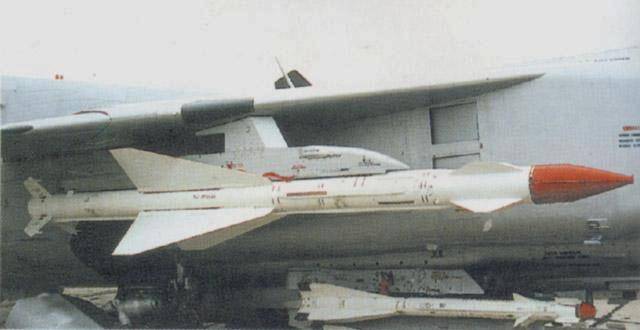
R-24R and R-60M missiles on MiG-23ML hardpoints
R-24R medium-range missiles are capable of hitting air targets when launched into the forward hemisphere at a distance of up to 50 km. The maximum firing range of R-24T "thermal" missiles is 35 km. A South Korean survey on North Korean military aviation states that until 1989, the Soviet Union transferred 450 R-24 missiles.
In parallel with the MiG-29 fighters, aviation weapons were supplied, including R-73 and R-27 air combat missiles.
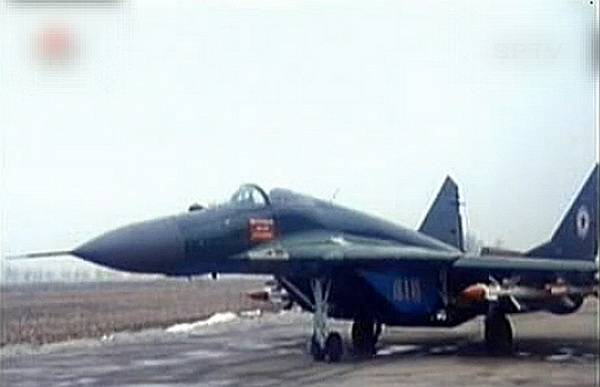
When developing the R-73 SD, such requirements as all-aspect, super-maneuverability and the implementation of the “released-forgotten” principle were taken into account. The missile does not impose significant restrictions on the maneuver of the carrier during operation, that is, it can be used when maneuvering an aircraft with large overloads.
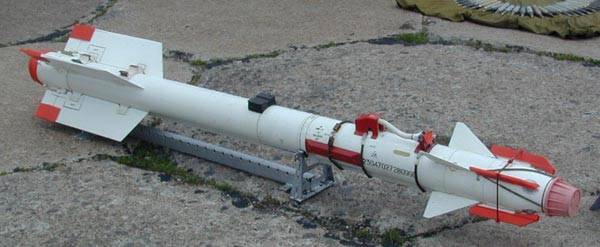
R-73 melee missile
The launch weight of the rocket is 105 kg. The maximum launch range in the forward hemisphere is 20 km. The minimum firing range in the rear hemisphere is 0,3 km. It was not possible to find exact data on the number of R-73 missiles betrayed to North Korea, but, apparently, their number does not exceed two hundred missiles.
To combat an air enemy out of line of sight, the MiG-29A fighter can carry two R-27R medium-range missiles with a semi-active radar seeker.
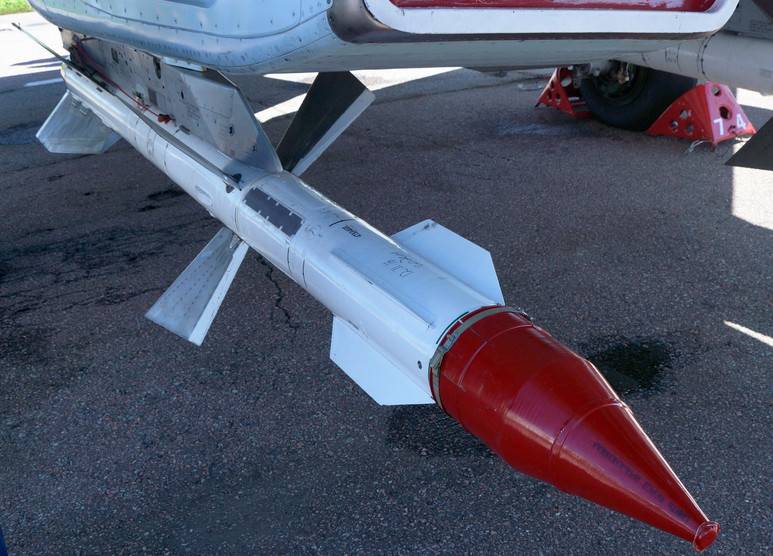
R-27R medium-range missile
The launch weight of the R-27R missile with a semi-active radar guidance system is 253 kg. Firing range in the front hemisphere - 58 km. According to South Korean sources, 1992 missiles were purchased before 50, which is clearly not enough to equip 45 fighters with them.
The armament of the MiG-29A can also include the R-27T missile launcher with a thermal homing head. But there is no reliable information that such missiles are in service in the DPRK.
Status and development prospects of North Korean fighter aviation
Although the DPRK formally has an impressive fighter fleet for such a country, for the most part these are obsolete aircraft that are not capable of intercepting at night and in difficult weather conditions, as well as fighting on equal terms with American, South Korean and Japanese 4th generation fighters.
The situation is aggravated by the poor technical condition of even the freshest North Korean fighters, whose age has already exceeded 30 years. According to South Korean experts, the coefficient of technical readiness of the DPRK fighter fleet does not exceed 0,3. In other words, out of ten aircraft, only three can carry out a sortie. Satellite images of North Korean air bases over the past 10 years clearly indicate a sharp reduction in the number of combat aircraft, which is caused by the decommissioning of worn-out aircraft and a high accident rate.
North Korean fighter pilots for the most part have a low level of training. Even in the "court" fighter regiments equipped with MiG-23 and MiG-29, the average annual flight time is 25-30 hours. Pilots of J-5, J-6, J-7 and MiG-21bis fighters spend no more than 20 hours a year in the air. A small flight time allows you to save the resource of aircraft, but this has an extremely negative effect on the qualifications of the flight crew.
It cannot be said that the leadership of the DPRK is not concerned about the drop in the combat potential of fighter aircraft, which should meet enemy bombers and cruise missiles at distant approaches.
However, an acute shortage of material resources and significant spending on the nuclear missile program do not allow North Korea to modernize the Air Force. However, it is not only the shortage of currency.
The same China can afford to supply the DPRK with light J-10 fighters or export Chinese-Pakistani JF-17 Thunder free of charge. But the PRC government, which provides economic support to North Korea, does not want to compromise itself by supplying modern weapons to a country that many members of the world community consider a pariah. For pragmatic China, the dividends from foreign economic relations with the United States, Japan and the Republic of Korea are much more important than an already completely dependent and technologically backward neighbor.
In the current situation, without Chinese support, the DPRK Air Force is doomed to degradation. In the face of confrontation with the global West, Russia can provide assistance in strengthening the combat potential of North Korean aviation. But it should be understood that Pyongyang is not able to pay for modern fighters, and this can cause a painful reaction not only from countries unfriendly to us, but also from China, which considers North Korea its fiefdom.
To be continued ...
Information